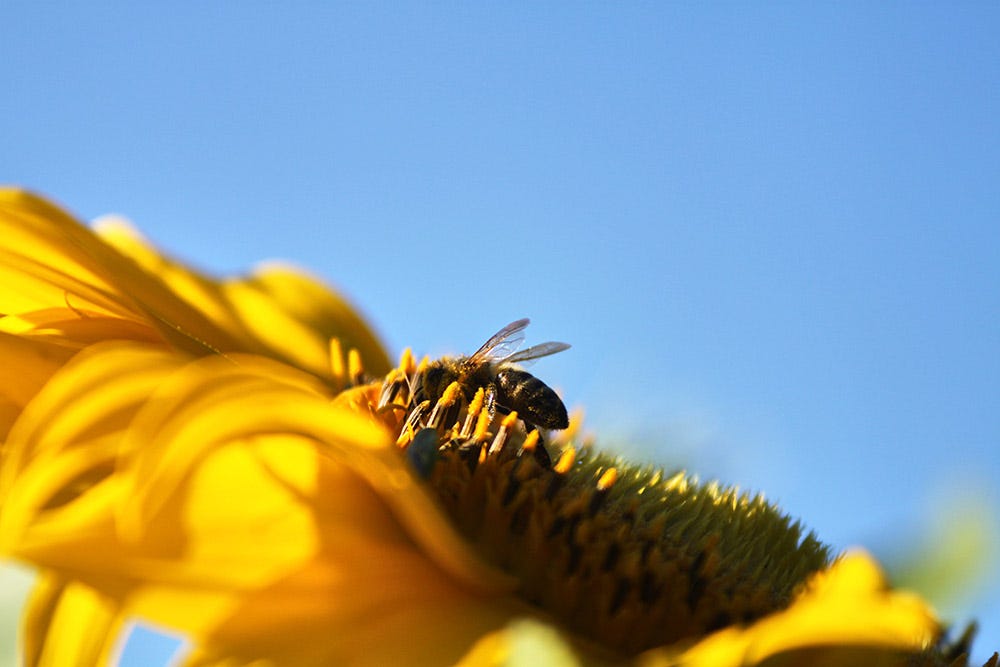
Ranging from the traditional yellow to red, green and white – sunflowers come in many beautiful shapes, sizes and shades. Fill your beds with the shorter 50cm varieties such as Helianthus annuus ‘Teddy Bear’. Or reach for the sky with a 3m titan like Helianthus annuus ‘Russian Giant’.
From sowing to growing
As their name suggests, the main thing you need to grow sunflowers successfully is sun – as well as fertile soil and a sheltered spot. Most sunflowers grow well in containers. But if you’re after height, planting in the ground is better.
Annual varieties bloom from summer into autumn. They can take about 11-18 weeks to grow from seed to flower. We recommend sowing a new batch of seeds every couple of weeks to ensure a constant supply of blooms.
-
In April, place single sunflower seeds 1.5cm deep in 10cm pots filled with peat-free, multi-purpose compost.
-
Water then cover with a clear plastic bag and place in a cool, bright place to germinate.
-
Keep watering the seedlings until May or early June. This is when they’ll be ready to plant outside at the same depth as they were in the pot.
-
Weed the soil and nourish it with plenty of garden compost or well-rotted manure before planting.
-
Protect the young plants from slugs and snails by placing copper tape around the plant or using wildlife-friendly slug pellets.
-
Water regularly and feed weekly until just before they start to flower. Taller varieties might also need staking with a bamboo cane, or similar, to stop them falling over as they grow tall.
Propagate the seeds and give birds a feast
Sunflowers develop lots of seeds after flowering. Dry a handful out for a few days then store in a paper envelope, ready to sow the following year.
You can also eat the seeds – but remember to remove the tough outer husk first. Birds love eating them too as they're rich in nutrients. Once any seeds are harvested and the plant is dead, add it to the compost heap.
